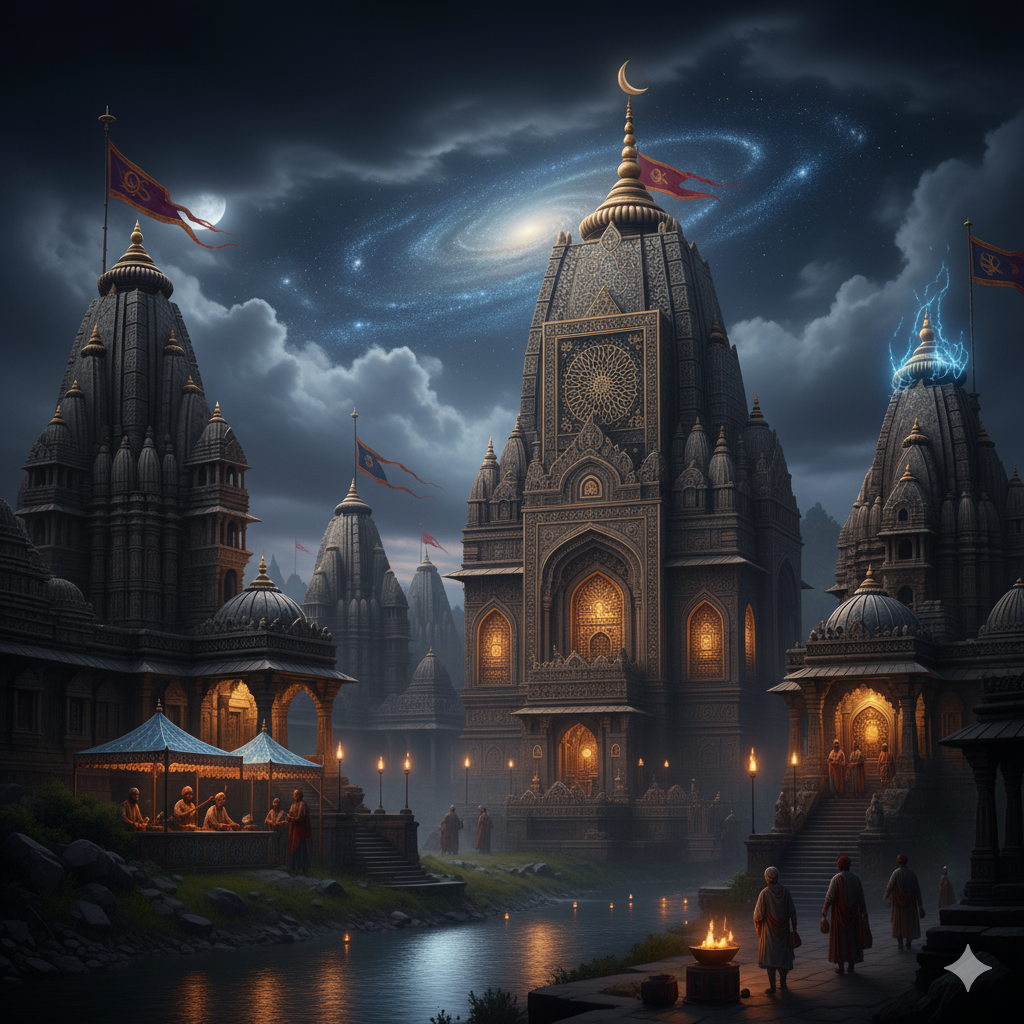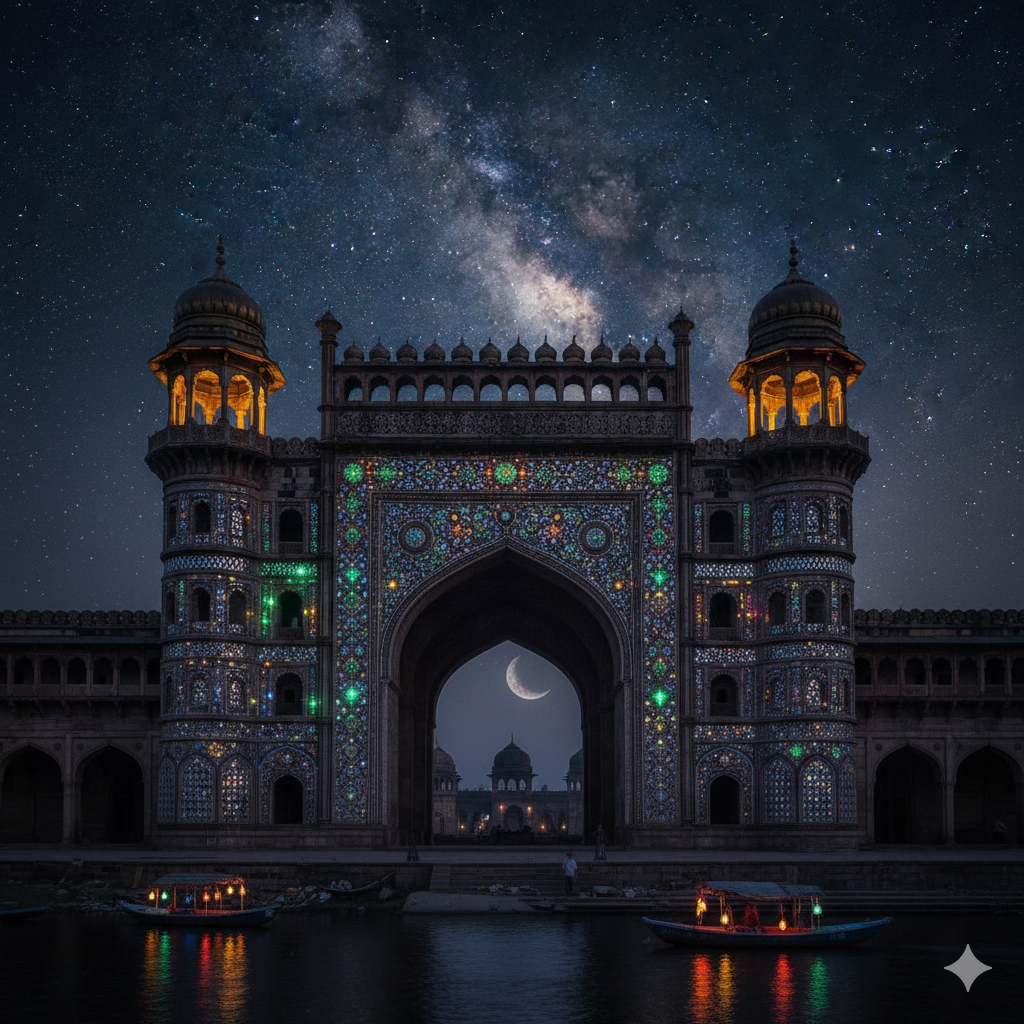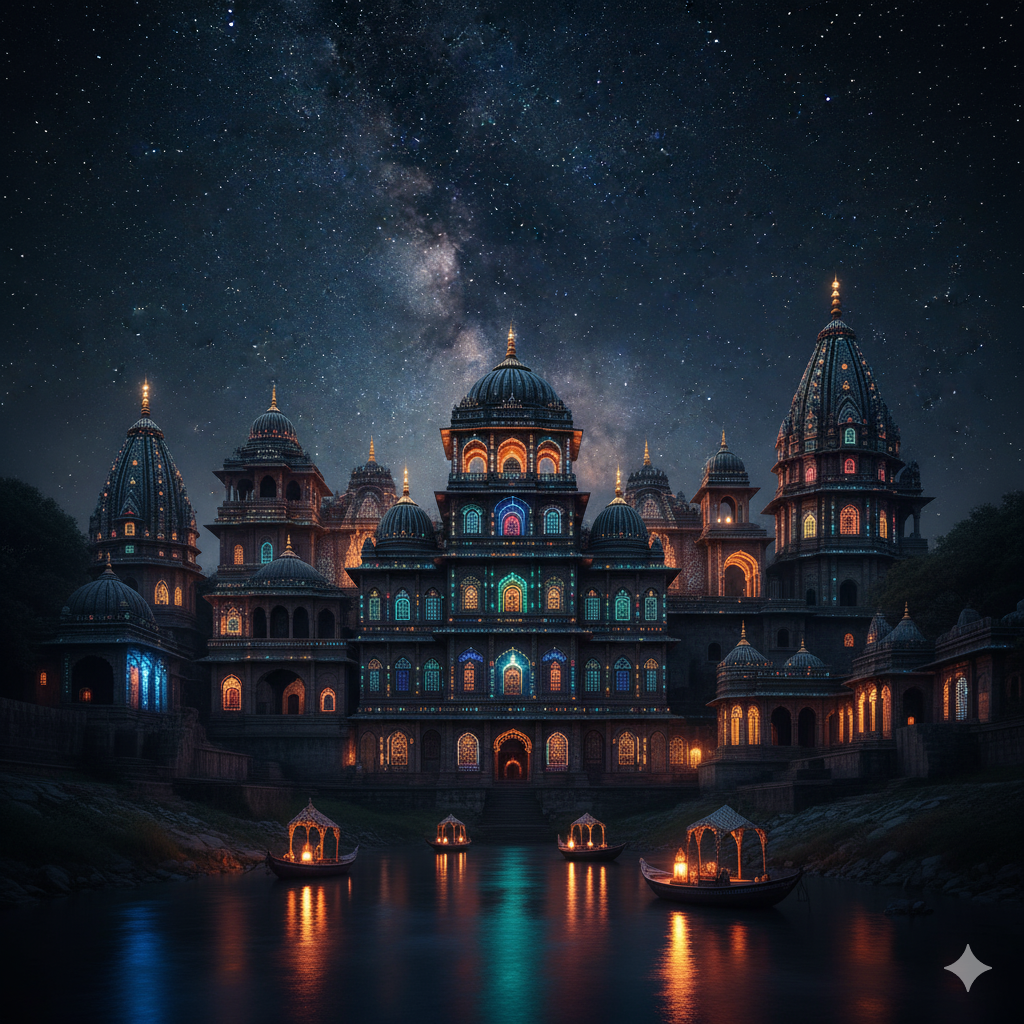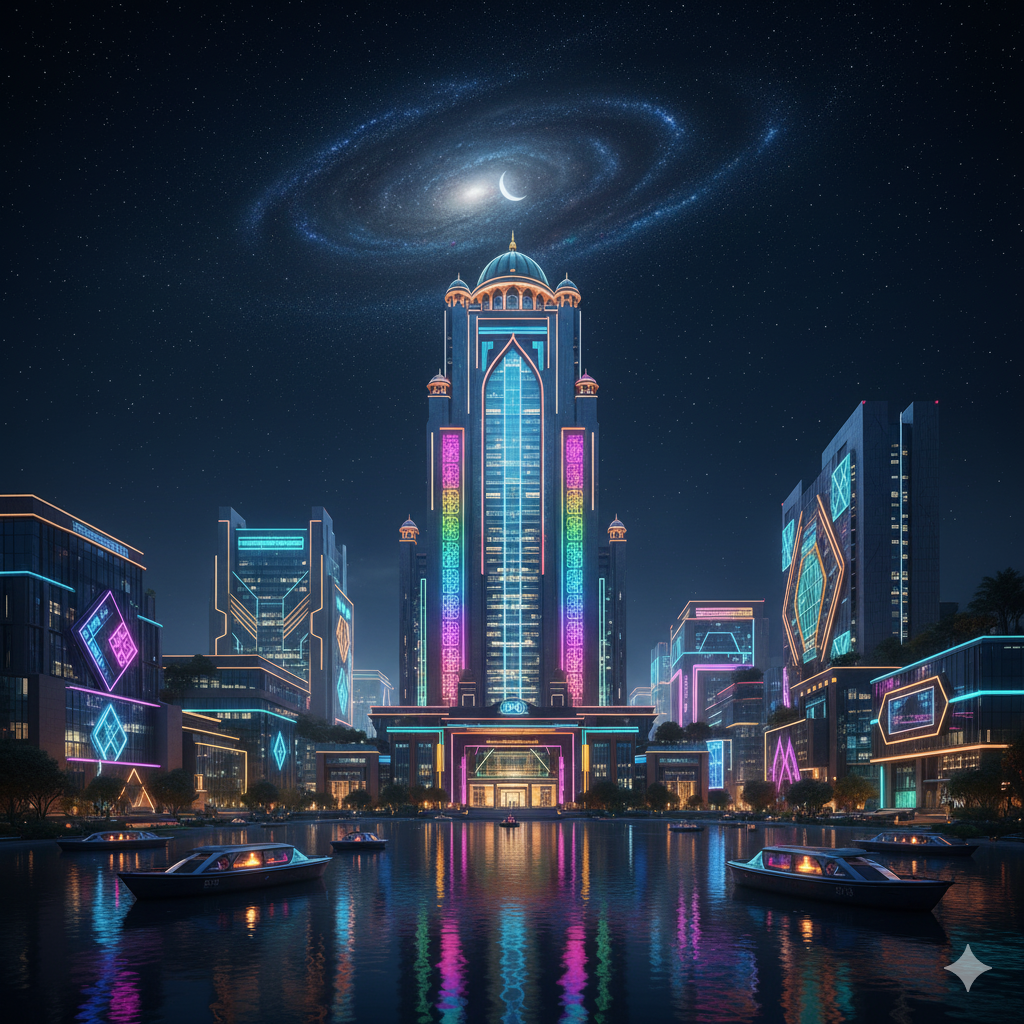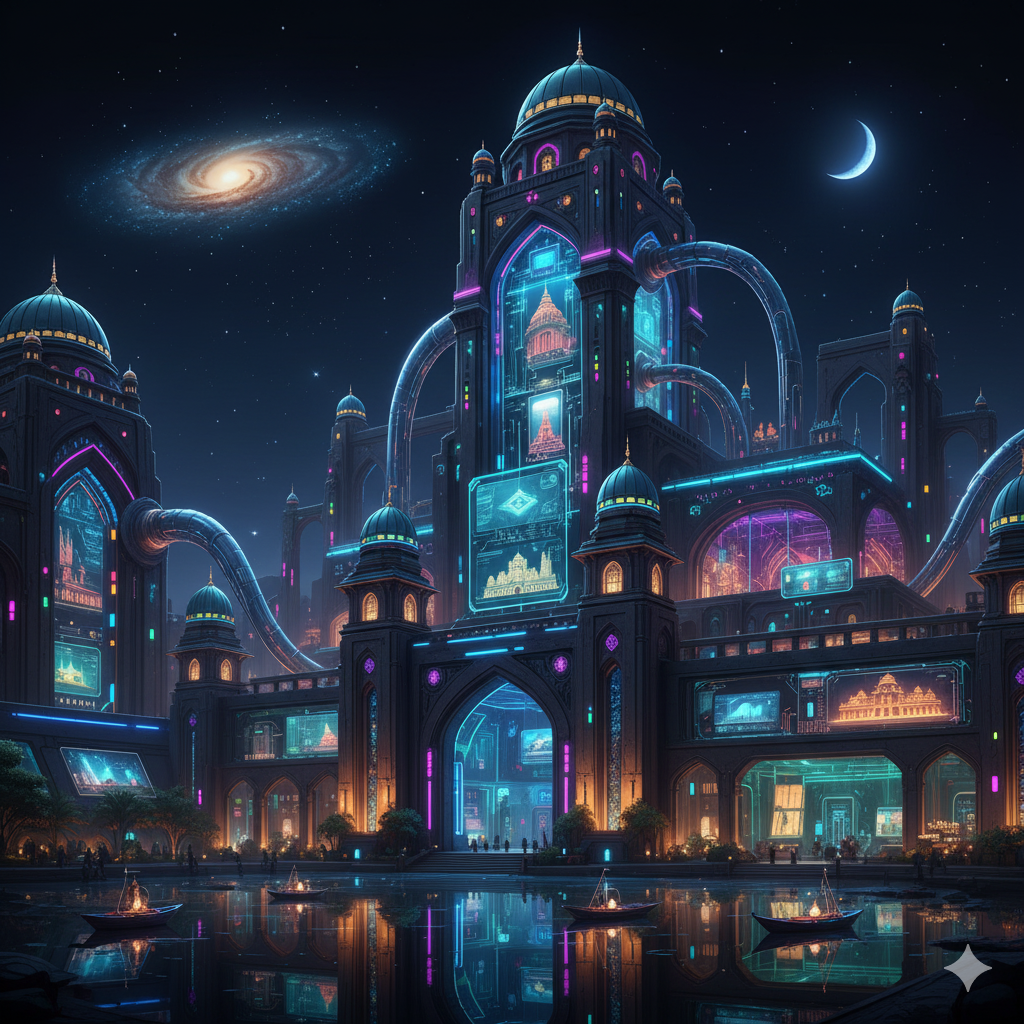Introduction
The medieval period of Indian history, marked by the rise of various regional kingdoms, witnessed a rich synthesis of art, architecture, and culture. Among these regional powers, the Sharqi Sultanate of Jaunpur holds a special place in the history of northern India. Established after the decline of the Delhi Sultanate’s Tughlaq dynasty in the 14th century, the Sharqi rulers transformed Jaunpur into a flourishing center of art, architecture, learning, and culture. The city became renowned as “Shiraz-e-Hind” (the Shiraz of India), symbolizing its status as a cultural and intellectual hub comparable to Shiraz in Persia.
This period saw not only political consolidation in eastern Uttar Pradesh but also a unique evolution in architectural style and cultural expression that combined Islamic aesthetics with indigenous traditions. The legacy of the Sharqi rulers remains visible even today through the magnificent monuments of Jaunpur, which stand as a testament to the region’s medieval glory.
Historical Background of the Sharqi Sultanate
The Sharqi dynasty (1394–1479 CE) was founded by Malik Sarwar, a former eunuch and noble under the Tughlaqs. When the Delhi Sultanate weakened after the death of Firoz Shah Tughlaq, Malik Sarwar declared independence and established his rule over Jaunpur around 1394 CE. The Sharqi rulers included Malik Sarwar (Sultan-us-Sharq), Mubarak Shah, Ibrahim Shah Sharqi, Mahmud Shah Sharqi, and Hussain Shah Sharqi, who was the last ruler before the Sultanate was annexed by the Lodis in 1479 CE.
The Sharqis ruled over a large territory encompassing parts of eastern Uttar Pradesh and Bihar, with Jaunpur as their capital. Their administration was efficient, their patronage of learning generous, and their architectural achievements remarkable. The dynasty created a distinct Indo-Islamic culture in which Persian traditions merged with the local artistic and linguistic milieu.
Jaunpur as a Cultural Center
Under the Sharqi rulers, Jaunpur became one of the most vibrant cities of North India. The Sultans were known for their deep appreciation of art, music, and literature, and their court attracted scholars, poets, musicians, and architects from across the Islamic world. The city’s atmosphere was enriched by a spirit of tolerance and intellectual curiosity.
- Literature and Learning:
The Sharqi rulers encouraged both Persian and Arabic scholarship, making Jaunpur a noted center of Islamic education. Many madrasas (educational institutions) were established, teaching theology, jurisprudence, philosophy, and science. Ibrahim Shah Sharqi was particularly known for his patronage of scholars. - Music and Fine Arts:
The court of Jaunpur was equally famous for its musical innovations. The Sharqi rulers encouraged Hindustani classical music, and Jaunpur became associated with a distinct school of music known as the “Jaunpur Gharana.” Sultan Hussain Shah Sharqi was an accomplished musician and composer himself, credited with developing several ragas that enriched the North Indian classical tradition. - Religious Tolerance and Syncretism:
The cultural atmosphere of Jaunpur was marked by religious tolerance. The Sharqi Sultans respected local Hindu traditions and incorporated Indian motifs in their art and architecture. This harmonious coexistence between Hindu and Islamic elements gave rise to a syncretic Indo-Islamic culture, reflected in their monuments and cultural practices.
Architectural Achievements of the Sharqi Sultanate
The Sharqi dynasty is most renowned for its unique architectural style, which represents one of the finest examples of regional Indo-Islamic architecture in northern India. The monuments of Jaunpur stand apart from the contemporaneous styles of Delhi, Bengal, or Gujarat because of their massive proportions, simplicity, and local adaptation of Islamic forms.
1. Characteristics of Sharqi Architecture
The Sharqi style was not merely an imitation of Delhi’s Sultanate architecture but an innovative blend of Persian, Afghan, and indigenous elements. Its major characteristics include:
- Use of Local Materials: The buildings were primarily constructed using local grey sandstone.
- Massive and Simple Structures: The architecture emphasized strength and simplicity rather than excessive ornamentation.
- Distinct Arches and Gateways: The arches in Jaunpur monuments were often pointed and slightly stilted, reflecting a unique regional interpretation.
- Use of Calligraphy: Inscriptions in Kufic and Naskh scripts adorned the façades, often containing Quranic verses and royal titles.
- Integration of Hindu Motifs: Many structures included lotus motifs, brackets, and lintels inspired by Hindu temple architecture, showing cultural assimilation.
2. Major Monuments of the Sharqi Period
(a) Atala Masjid (1408 CE)
Commissioned by Ibrahim Shah Sharqi, the Atala Masjid is one of the most magnificent and imposing structures of medieval India. It was built on the site of an earlier temple and stands as a remarkable synthesis of Islamic and Hindu architectural forms.
- The mosque features a huge arched façade (pishtaq), about 23 meters high, dominating the skyline of Jaunpur.
- The mihrab (prayer niche) and minbar (pulpit) are intricately decorated with geometric patterns and calligraphic inscriptions.
- The absence of minarets distinguishes Jaunpur mosques from those of Delhi or Gujarat.
- The courtyard is surrounded by pillared cloisters that resemble Hindu temple halls.
Atala Masjid became a model for later constructions and remains the most iconic representation of the Sharqi architectural identity.
(b) Jama Masjid (1470 CE)
The Jama Masjid of Jaunpur was built by Hussain Shah Sharqi, the last ruler of the dynasty. It reflects the culmination of Sharqi architectural style — larger, grander, and more refined than its predecessors.
- The mosque stands on a raised platform approached by a flight of steps.
- The main archway is massive, richly carved, and flanked by tall sloping buttresses.
- The domes are proportionately balanced, and the interior has high ceilings supported by elegant pillars.
- The façade shows perfect symmetry, symbolizing the maturity of Sharqi architecture.
The Jama Masjid remains a prominent example of the fusion between structural grandeur and spiritual simplicity.
(c) Lal Darwaza Masjid (1450 CE)
This mosque was constructed during the reign of Mahmud Shah Sharqi and was dedicated to Bibi Raji, the queen. Its name “Lal Darwaza” (Red Gate) comes from the red-painted gateway of the mosque.
- The structure is smaller in size compared to Atala and Jama Masjids but notable for its refined proportions and ornamental finesse.
- The design includes both arched screens and trabeate features derived from Hindu temple architecture.
- The mosque symbolizes the Sharqi rulers’ respect for royal women and their active role in cultural life.
(d) Jhanjhari Masjid
This mosque was built by Ibrahim Shah Sharqi and is known for its beautiful arched gateway (jhanjhar) that gives it its name. Although much of the structure has been damaged, the gateway’s exquisite carvings and calligraphy still display the artistic excellence of the period.
(e) Shahi Bridge (Akbari Bridge)
Though constructed later during Akbar’s reign (1568 CE), the Shahi Bridge stands near many Sharqi monuments and reflects the enduring influence of the Sharqi architectural legacy on Mughal construction in the region.
Cultural Syncretism and Intellectual Growth
The Sharqi period in Jaunpur was not limited to architectural splendor; it was also a period of intellectual efflorescence and cultural pluralism.
- Promotion of Education and Learning:
The Sharqi rulers established numerous madrasas, libraries, and centers of religious instruction. Scholars from Delhi, Bengal, and Persia were invited to teach and translate classical works. The city’s educational institutions rivaled those of Delhi and Bengal in fame. - Language and Literature:
Persian remained the court language, but the Sharqi court also encouraged Hindavi (early Hindi) as a medium of poetic and musical expression. This bilingual environment fostered the growth of a composite literary culture. - Music and Performing Arts:
Sultan Hussain Shah Sharqi was a legendary patron of music. He is credited with creating new ragas and supporting musicians who later influenced the Mughal court. The tradition of Dhrupad singing has its early roots in the Sharqi period of Jaunpur. - Religious Harmony:
The Sharqi rulers followed Sunni Islam but maintained cordial relations with local Hindu communities. Many temples were left undisturbed, and Hindu artisans played a key role in constructing Sharqi monuments, further deepening cultural integration.
Impact and Legacy of the Sharqi Sultanate
Although the Sharqi Sultanate eventually fell to the Lodis, its impact on the cultural and architectural landscape of northern India was profound and long-lasting.
- Architectural Influence:
The Jaunpur style of mosque construction influenced later Mughal architecture. The concept of monumental gateways and domeless prayer halls was adopted and refined by the Mughals. - Cultural Continuity:
The tradition of music and poetry continued in the region even after the fall of the Sharqis. Jaunpur remained a center of learning and cultural refinement during the Mughal period. - Regional Identity:
The Sharqi period helped establish Jaunpur’s distinct regional identity, setting it apart from Delhi or Bengal. The blending of Persian and Indian traditions in architecture, literature, and music symbolizes the broader cultural synthesis of medieval India.
Conclusion
The Sharqi Sultanate of Jaunpur represents a brilliant chapter in the history of medieval India. Emerging from the decline of centralized authority in Delhi, the Sharqi rulers carved out a realm that was not only politically stable but also culturally vibrant and artistically innovative. Their monuments, particularly the Atala Masjid and Jama Masjid, embody the spirit of Indo-Islamic architectural synthesis, while their patronage of music, learning, and literature enriched India’s cultural heritage.
Jaunpur under the Sharqis became a symbol of tolerance, creativity, and intellectual vitality — qualities that earned it the title Shiraz-e-Hind. Even today, the surviving structures of Jaunpur stand as silent witnesses to a golden age of cultural fusion and architectural magnificence in northern India.
